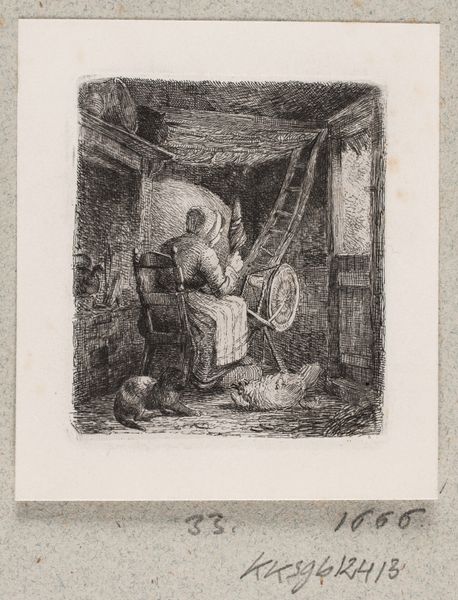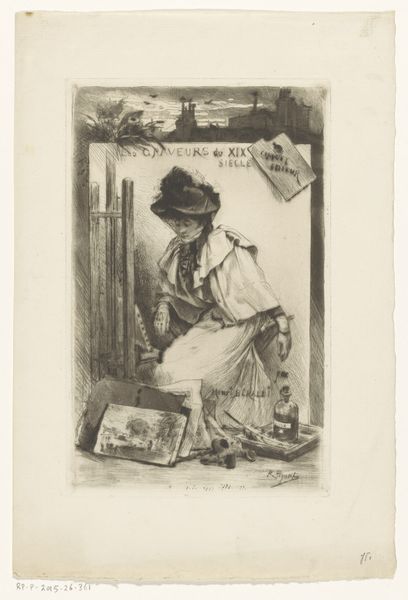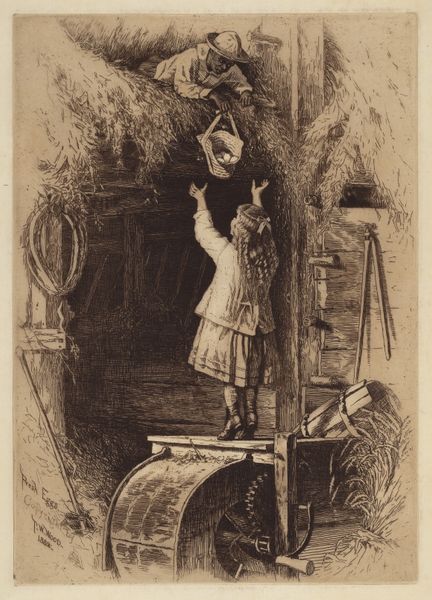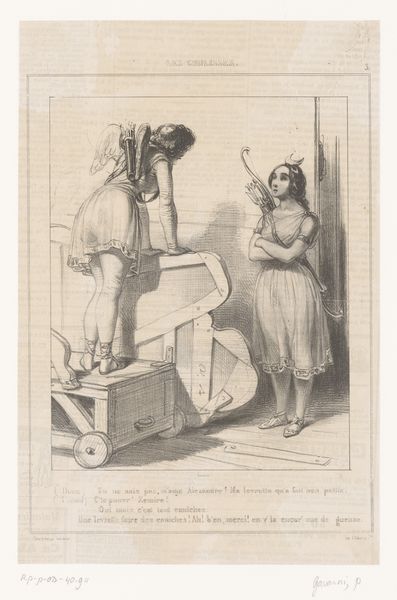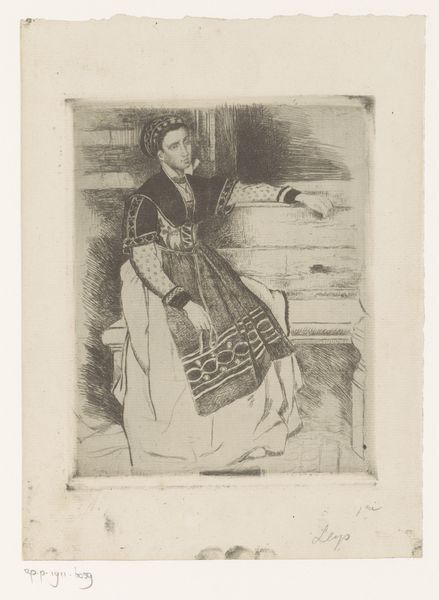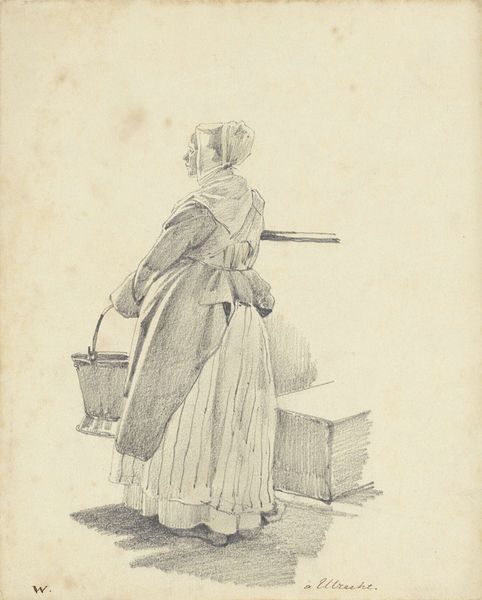
print, etching
#
portrait
# print
#
impressionism
#
etching
#
landscape
#
genre-painting
#
realism
Dimensions: plate: 379 x 252 mm image: 347 x 236 mm sheet: 566 x 413 mm
Copyright: National Gallery of Art: CC0 1.0
Curator: Ah, another striking example of late 19th-century American printmaking. This is Otto Henry Bacher's etching, "At the Spinning Wheel," created around 1884. Editor: It feels so quiet, so domestic, but with a slight air of…loneliness? The woman's gaze is distant, even though the scene seems cozy. It's like she’s present but mentally elsewhere. Curator: The image taps into the burgeoning Arts and Crafts movement, evoking a return to pre-industrial simplicity and valuing traditional skills like spinning. The romanticized depiction of rural life, although idealized, speaks volumes about societal anxieties surrounding rapid industrialization. Editor: That’s true! It feels like it’s mythologizing simplicity, even while probably benefitting from whatever technologies were creeping in. I wonder, did Bacher know how to spin? The wheel seems so… imposing, almost sculptural. I’m thinking of Calder's mobiles somehow. The delicate web spun by the figure against her grounded posture... What could the tension between delicacy and the mundane convey to the viewer in those years? Curator: I am sure, and like other realist and impressionist artists, Bacher here examines shifting gender roles. Spinning, traditionally a woman’s task, is framed against a backdrop hinting at a larger, changing world. You can catch the hints of the nearby village in the background. I am also curious to ask if a professional etcher such as Otto, who worked from the premise of gender difference in work habits, thought he could capture those aspects with more rigor and attention? Editor: It also suggests three stories existing next to each other: the woman working in place, while outside her front door we observe the nearby town, and yet further out a full fledged landscape view is available... Do you find that women in paintings during these industrializing eras, were posed more in line with nature than in active industrialized urbanized environments? Curator: The artwork does hint at this trope that art history usually conveys, yes. In that sense, art, which some have associated more closely with masculinity (or white, masculine production, and value systems), seems like the active character or gender and labor-based dynamic agent that changes her, the world around her, or is it rather the dynamic nature of femininity to resist the encroachment of civilization's "urban" centers? Food for thought. Editor: Precisely! It reminds us that images rarely just reflect reality, but shape our understanding of it. Thanks for the tour.
Comments
No comments
Be the first to comment and join the conversation on the ultimate creative platform.


